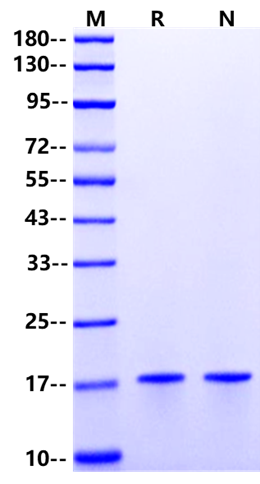1、Hubert F. et al. (2022) FGF10 promotes cardiac repair through a dual cellular mechanism increasing cardiomyocyte renewal and inhibiting fibrosis. Cardiovasc Res. 118(12): 2625-2637.
2、Sun W. et al. (2019) Cytokine fibroblast growth factor 10 (FGF10) polymorphisms are associated with risk of myopia in young children. J Cell Biochem. 120(9): 15241-15247.
Fibroblast growth factor 10 (FGF-10), a secreted heparin-binding protein, is a member of the fibroblast growth factor (FGF) family and is also known as Keratinocyte Growth Factor-2 (KGF-2). FGF family members possess broad mitogenic and cell survival activities, and are involved in a variety of biological processes, including embryonic development, cell growth, morphogenesis, tissue repair, tumor growth and invasion. FGF-10 exhibits mitogenic activity for keratinizing epidermal cells, but essentially no activity for fibroblasts, which is similar to the biological activity of FGF7. Studies revealed that genetic variants of FGF10 were associated with extreme myopia in adults.
